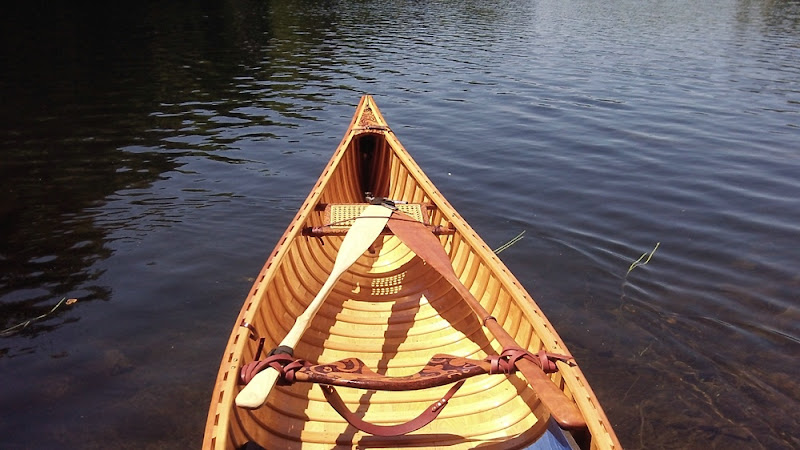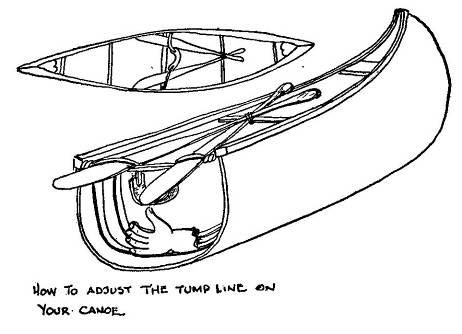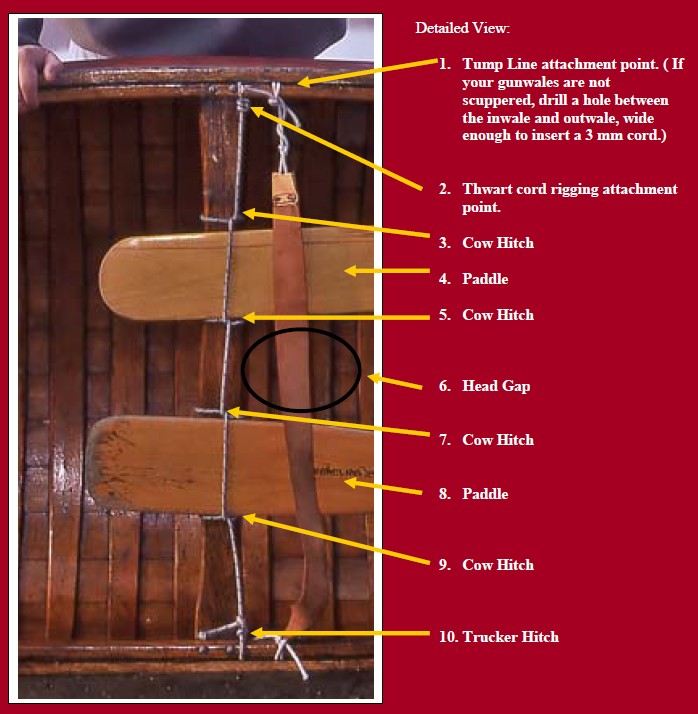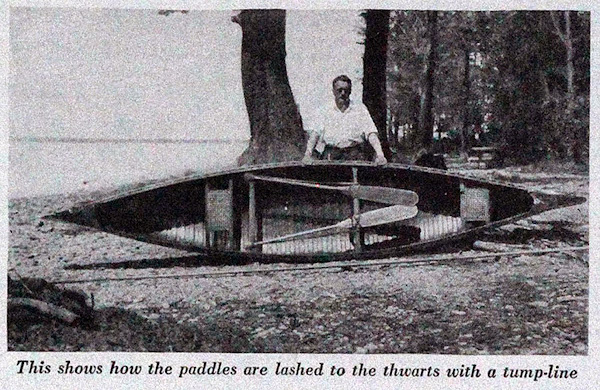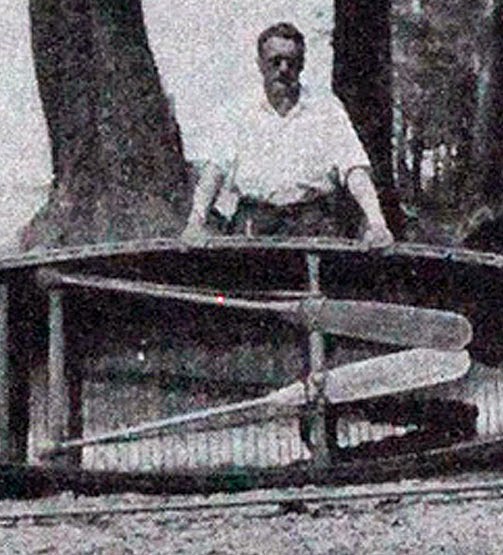Bob, I've been using a leather tumpline on both my w/c canoes for a while now - a light 14 footer (48 lb) and heavier 15 footer (68 lb).
I found it helped to relieve some shoulder and back discomfort and enjoy using it. Realize it has many detractors who devalue its use but I know it works for my body and tripping style. A major downside for folks may be the need to spend a lot of potentionally frustrating trial and error time fiddling with the appropriate tying length and method - something you want to do before you head out and not out on the trail. There really is no universal formula that works for every scenario and it has to be remembered that historically, the tumpline was a very personal piece of gear that was traditionally customized by the carrier for their own use. A one size fits all approach won't work. I've read sources which state the headstrap should touch the bottom of the hull before tying in and another which mentioned it should be hand height from the hull bottom. In the end each of my boats needed a different tying method because of differences in hull depth and the tying positions on the thwart so neither of those guidelines worked.
Once it's in that sweet spot, however, it is remarkable how much relief it provides during a portage. But if you're off by even just an inch you can feel the neck discomfort and lack of balance. I suspect this is what likely turns off a lot of folks. Now that the tumplines are secured in my canoes, they are left in place, but I've also etched the leather and marked the thwarts to find that ideal tying length again.
Of course, there has to be some common sense with its usage. I might slip it off if portaging on very unsure terrain like slippery mud or wet rocks. After trying various configurations with lashed paddles, I now use a method illustrated in Robert Ritzenthaler's
Building the Chippewa Canoe. Here the native builder, Bob Pine, puts his paddle blades forward and uses the tails of the tump to secure the paddle grips onto the center thwart / yoke.
The blade forward position makes the bow a bit heavy, but this is offset with the fact that I lash my kneeling pad and some other stuff to the seat in the rear and that creates the necessary balance. Here's a pic of everything lashed up.
For another method, check out
this video of Innu builders from Quebec show a different tying in method with the paddles. The builder uses a simple cord for a tump that slides over his cap but customizes the length based on his own experience. Guess that's the key, knowing what works you you.
Another source -
I Live in the Woods by Paul Provencher - documents his method which was influenced by the Innu (Montagnais) of Quebec's north shore. Here's a brief excerpt and pic:
"In packing a canoe, the best canoe-carriers of the Manicouagan and the Moisie Rivers just cross the paddles and tie them on top of the front bar. They then pass the tumpline over the blades at the middle bar. To judge the distance from the bottom of the canoe to the tumpline they measure a handspread upright."
Lastly, here's a
link (*.pdf format) showing an alternate method which uses a combination cord and leather tump line. It's from
Camp Nominingue in Quebec
Coureur: Very much looking forward to seeing your woven tumpline project when it's complete.

